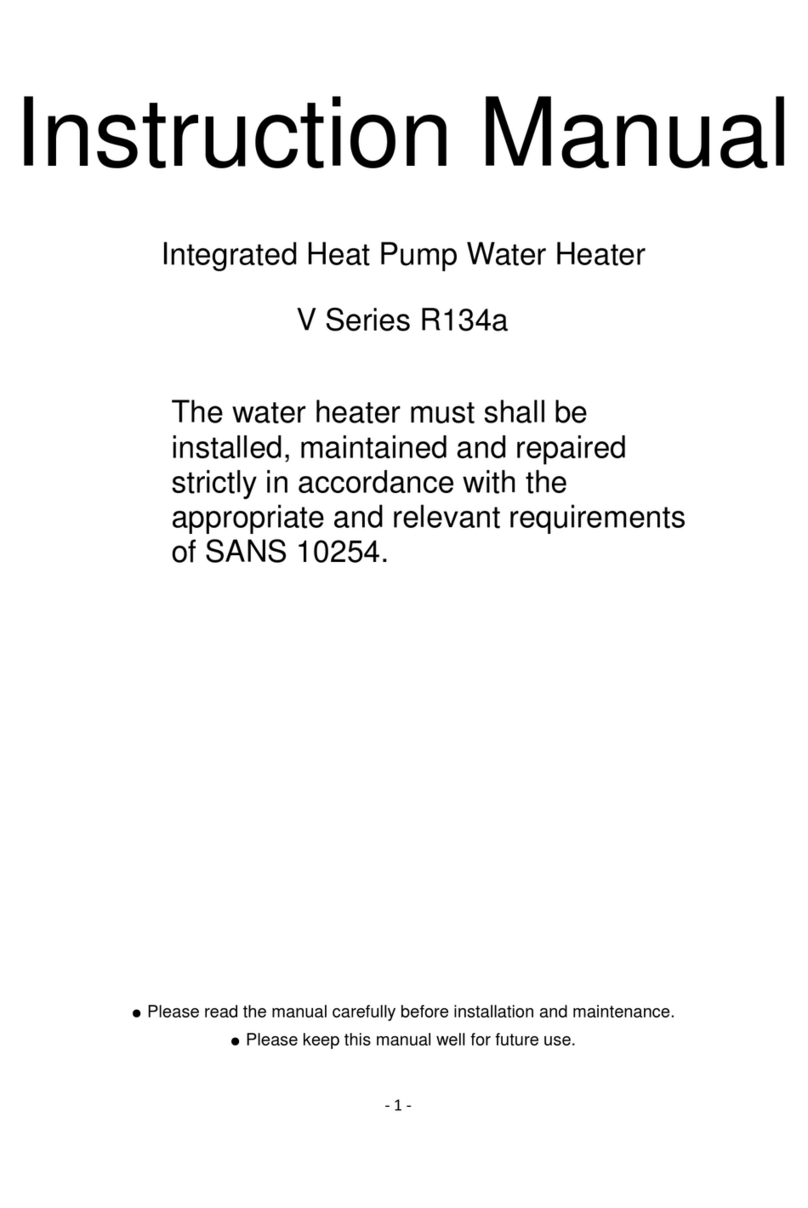Kwiksol Instruction, Installation & Warranty Manual 7
G. FEATURES OF THE SOLAR VACUUM TUBES
• Consists of two glass tubes (inner
and outer) manufactured from
Borosilicate glass.
• The outer tube is transparent
allowing light rays to pass through it
with minimum reflection.
• The inner tube is coated with a solar
selective coating, which provides
excellent solar radiation absorption.
• The tops of the two tubes are fused
together and the air extracted,
which forms a vacuum.
• To maintain the vacuum between the two tubes a barium layer is used, which
provides a clear visual indication of the vacuum status. The silver coating will turn
white if the vacuum is lost.
• The tubes are installed onto a frame and the tops of the tubes inserted into a
manifold. Both are made from anodized aluminum.
H. ROOF LOCATION OF A SOLAR SYSTEM
1. Roof location and pitch
• For optimum performance the solar flat plate collector
panel/s or solar vacuum tubes with frame, need to face
the equator (facing north for Southern Hemisphere
installations). Installation on angles of up to 45
ໍ
away from
the equator do not have a major effect on the annual solar
output, consequently roof locations which face less than
45
°
away from the equator are acceptable. Solar radiance
from the sun begins at about 10.00 until 16.00 and at its
peak between 12.00 and 14.00.
• If the solar flat plate collector panel/s or solar vacuum tubes are installed with an
east facing bias, the best solar capture is achieved in the morning and if installed
with a west facing bias, in the afternoon.
• The installation location should not be subject to excessive shading from trees
and adjacent buildings and particularly between 9.00 and 15.00. Shadows are
longer in winter than in summer so a location that is free of shadows in summer
may have some shadows in winter.
• The solar flat plate collector panels or solar vacuum tubes should be installed
on a roof pitch greater than 8
ໍ
and less than 30
ໍ
. Where the roof pitch is greater
than 30
ໍ
, the installation will require additional support to prevent it from moving
downwards when installing and after installing. If the pitch is less than 8
ໍ
, the
installation will require a mounting frame to increase the pitch to above 8
ໍ
.
Installations below 8
ໍ
do not thermosyphon effectively and the solar flat plate
collector panel/s or vacuum tubes will not clean properly when it rains.
12 set 16 set 20 set
PERFECT
ORIENTATION
ZONE
GOOD
ORIENTATION
ZONE
GOOD
ORIENTATION
ZONE





























